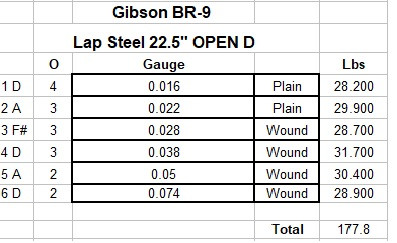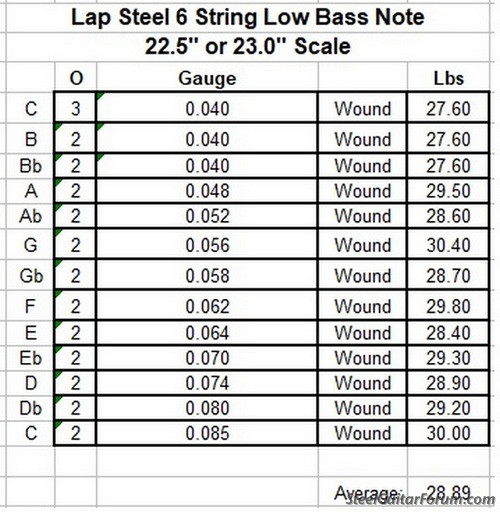To calculate tension you need to know the instrument scale, the pitch note, and the diameter of the string. I use Stringjoy's on line tension calculator to figure the pull in pounds.
https://tension.stringjoy.com/
I have had fun trying out different tunings but occasionally I end having to use a too thick big string for the #6 low bass string.
Take OPEN D (L2H) DADF#AD for example. A lot of You Tube players use it. The low bass note is a D2. The "2" means in is the D note in the second octave. To calculate tension you must know which octave the note is in.
I tried OPEN D on my Gibson BR-9 22.5" lap steel:

The #6 bass string for D2 note needs a whopping 0.074" string to have the tension I like - 28.90 lbs of pull. I put one on it but after using it, it was just too big for the 22.5" scale. The You Tubers that are using OPEN D are using a 25.5" scale Duesenberg lap steel so they can use a 0.060" or a 0.062" size string to get a D2 note with 27.1 lbs of pull.
I put a chart together that lists bass notes from C3 used in standard C6 tuning down to C2 which is low with string sizes that that pull between 27 and 31 pounds of pull. I use it to check if the tuning will work on my 22.5" or 23.0" scale lap steels. I'm posting it as you may find it useful as you explore different tuings for your short scale lap steels.

If you like less tensions use a smaller string. I find that my lower limit is E2 using a 0.064" string.